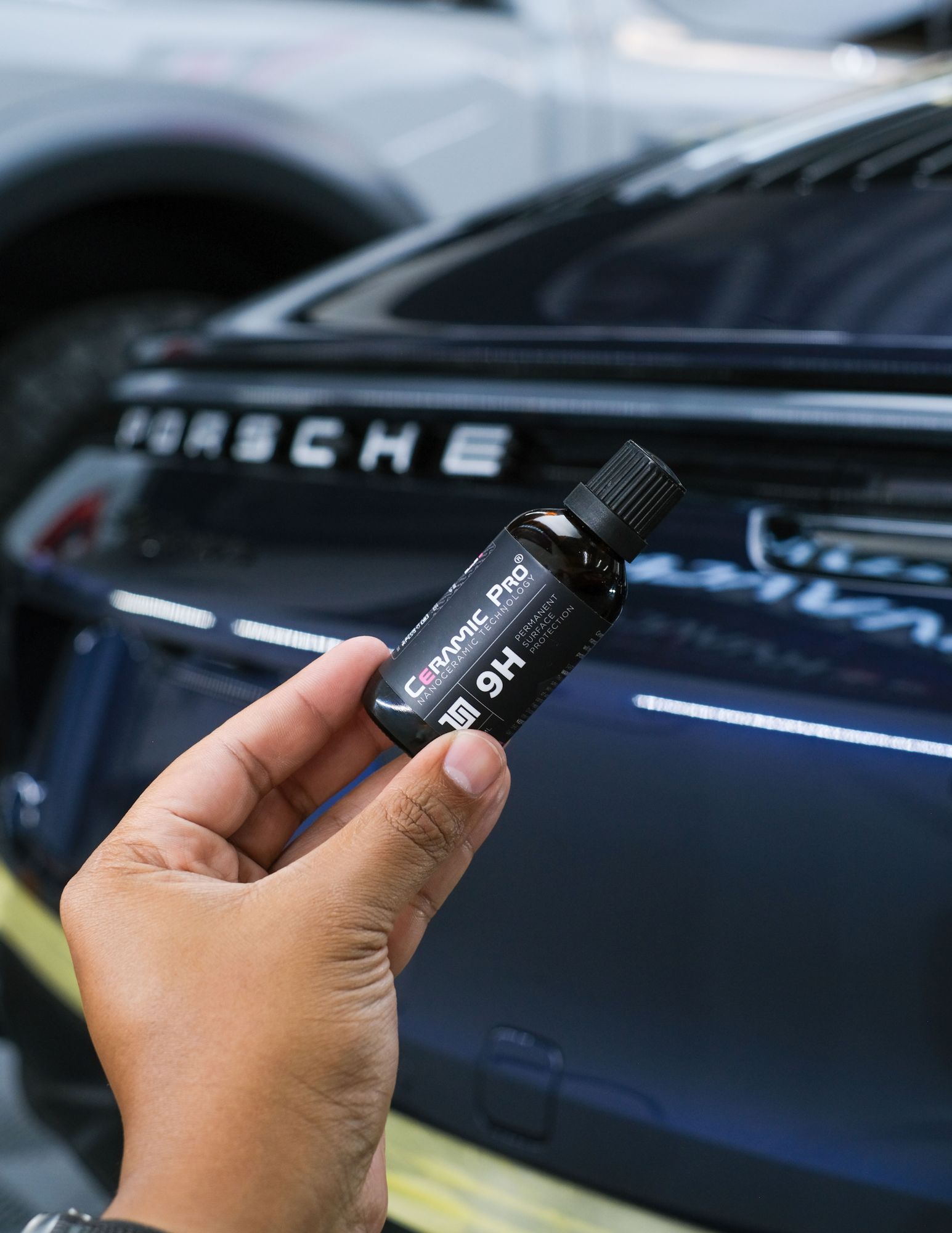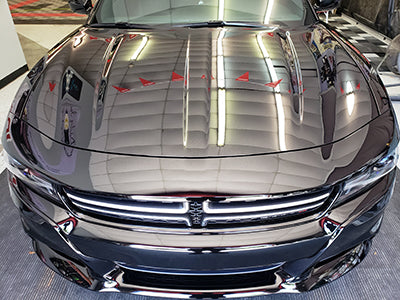Top Benefits of Ceramic Coating for Long-Lasting Car Care
Top Benefits of Ceramic Coating for Long-Lasting Car Care
Blog Article
Ceramic Covering vs. Standard Wax: Which Gives Better Long-Term Protection?
The argument in between ceramic finishes and typical wax for automobile protection has actually amassed significant attention amongst vehicle enthusiasts and specialists alike. While both satisfy of protecting paint, their distinctions in resilience, application, and long-term upkeep expenses may influence a consumer's selection. Ceramic finishings flaunt remarkable durability and resistance to ecological factors, yet the intricacy of their application questions concerning access and functionality. As we explore these contrasting alternatives, it comes to be necessary to consider not just the immediate benefits yet likewise the implications for car treatment gradually.
Review of Ceramic Covering
Ceramic layer has gained significant popularity amongst automotive lovers and detailers alike due to its sophisticated safety high qualities. This cutting-edge modern technology is made to create a resilient, hydrophobic shield over a lorry's paint surface area, substantially enhancing its resistance to ecological pollutants such as dust, UV rays, and chemical spots. Unlike conventional wax, which offers a short-term layer of defense, ceramic layers bond at a molecular level with the paint, using durable toughness-- usually expanding beyond two years with proper maintenance.
The application procedure entails careful preparation of the automobile's surface area, including cleaning and brightening to make sure optimal bond. Once used, the covering cures to develop a robust layer that not just includes depth and gloss to the paint however additionally simplifies upkeep. With its hydrophobic residential properties, ceramic layer enables water and dust to slide off more conveniently, minimizing the frequency of cleans and reducing the threat of swirl marks.
Additionally, ceramic finishings are available in various solutions, permitting customers to choose items customized to their specific demands and choices. Overall, ceramic finish stands for a substantial development in paint protection technology, supplying superior efficiency contrasted to conventional alternatives.
Overview of Traditional Wax
Typically considered a staple in auto care, wax offers as a popular option for those looking for a simple technique to boost and secure their automobile's paint - ceramic coating. Automotive wax normally makes up all-natural components, such as carnauba, or artificial compounds, developed to produce a safety layer externally of the paint. This layer not only boosts the automobile's gloss and beam but also supplies a barrier against ecological contaminants
The application of wax is typically user-friendly, making it accessible for both specialists and DIY fanatics. It can be used by hand or device, permitting for adaptability in the describing process. Once applied, wax calls for a curing period, after which it sets to develop a safety shell. Wax is likewise known for its ability to fend off water, advertising a beading impact that helps in the avoidance of water areas and deterioration.
Nonetheless, while wax works for boosting the aesthetic appeal of a vehicle, it is necessary to keep in mind that the security it uses might require much more frequent reapplication contrasted to alternate products, such as ceramic finishes. Overall, traditional wax stays a favored option for those prioritizing simplicity of usage and prompt visual improvement.
Toughness and Longevity Contrast
While both ceramic layers and typical wax offer safety benefits for vehicle paint, their sturdiness and longevity vary substantially. Typical wax, normally made from natural carnauba or synthetic polymers, usually offers a protective layer that lasts roughly three to six months. This reasonably brief life advice expectancy necessitates regular reapplication to keep ideal protection.
In contrast, ceramic finishings are engineered from advanced nanotechnology, creating a covalent bond with the paint surface. This causes a durable, hydrophobic layer that can endure for 2 to five years, depending on the item and environmental problems. The remarkable sturdiness of ceramic layers is credited to their chemical framework, which supplies enhanced resistance to scratches, UV rays, and oxidation.

Defense Against Environmental Factors
Securing a vehicle's paint from environmental aspects is crucial for maintaining its look and value gradually. Vehicles are continuously revealed to a variety of components, including UV rays, bird droppings, tree sap, acid rain, and roadway gunk, every one of which can jeopardize the honesty of the paintwork.
Ceramic finishes offer a durable protection versus these environmental assailants. Unlike traditional wax, which can break down swiftly under UV exposure, ceramic coverings create a resilient, hydrophobic layer that stands up to the dangerous impacts of sunshine and toxic wastes. This advanced modern technology develops a chemical bond with the automobile's surface area, offering superior security that lasts for several years, also in harsh conditions.
In comparison, ceramic layers keep their protective top qualities much longer, substantially minimizing the danger of paint damage and guaranteeing that the automobile preserves its visual charm. As an outcome, ceramic layers are significantly recognized as the remarkable option for long-lasting protection against environmental aspects.
Application and Maintenance Distinctions
The approaches of application and subsequent upkeep for ceramic coatings and conventional wax differ dramatically, influencing the general customer experience and efficiency of each product. Ceramic coatings call for a more elaborate application process, usually involving surface prep work that includes cleaning, sanitizing, and polishing the vehicle. As soon as the surface area prepares, the ceramic covering is used in a regulated setting, frequently needing professional knowledge to make sure proper healing and bonding to the paint.

While both products boost lorry appearance, the longer-lasting defense offered by ceramic coatings may warrant their first investment, despite the more requiring application procedure. Alternatively, traditional wax stays a popular option for this page those looking for a simpler, albeit temporary, service.

Final Thought
Finally, ceramic layers show substantial advantages over standard wax in terms of longevity and ecological defense. With a life expectancy prolonging two to 5 years and premium resistance to UV rays, dust, and chemical spots, ceramic finishings offer an extra reliable solution for lasting automobile maintenance. Although the application process may call for expert knowledge, the resulting price savings and reduced frequency of reapplication highlight the worth of ceramic finishings for those looking for ideal car protection.
The dispute in between ceramic finishings and traditional wax for lorry security has garnered substantial attention among vehicle enthusiasts and experts alike. Unlike standard wax, which provides a momentary layer of protection, ceramic layers bond at a molecular level with the paint, offering resilient longevity-- commonly extending beyond two years with appropriate upkeep.
While both ceramic coatings and typical wax deal safety advantages for automobile paint, their durability and longevity differ significantly. For cars and truck enthusiasts seeking long-lasting defense, ceramic finishes present a compelling advantage over conventional wax items.
In final thought, ceramic layers show significant advantages over traditional wax in terms of resilience and environmental protection.
Report this page